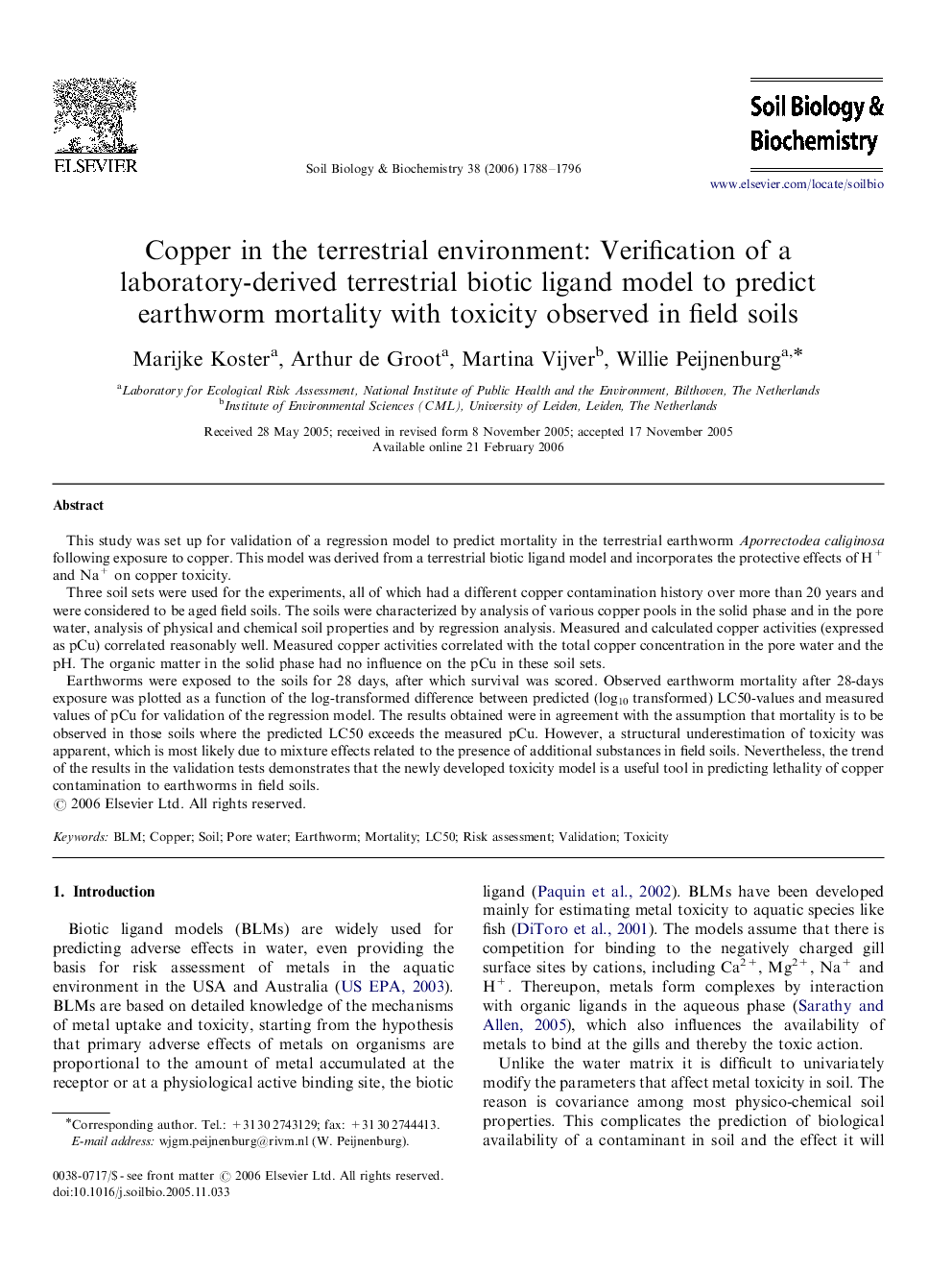| Article ID | Journal | Published Year | Pages | File Type |
|---|---|---|---|---|
| 2026582 | Soil Biology and Biochemistry | 2006 | 9 Pages |
This study was set up for validation of a regression model to predict mortality in the terrestrial earthworm Aporrectodea caliginosa following exposure to copper. This model was derived from a terrestrial biotic ligand model and incorporates the protective effects of H+ and Na+ on copper toxicity.Three soil sets were used for the experiments, all of which had a different copper contamination history over more than 20 years and were considered to be aged field soils. The soils were characterized by analysis of various copper pools in the solid phase and in the pore water, analysis of physical and chemical soil properties and by regression analysis. Measured and calculated copper activities (expressed as pCu) correlated reasonably well. Measured copper activities correlated with the total copper concentration in the pore water and the pH. The organic matter in the solid phase had no influence on the pCu in these soil sets.Earthworms were exposed to the soils for 28 days, after which survival was scored. Observed earthworm mortality after 28-days exposure was plotted as a function of the log-transformed difference between predicted (log10 transformed) LC50-values and measured values of pCu for validation of the regression model. The results obtained were in agreement with the assumption that mortality is to be observed in those soils where the predicted LC50 exceeds the measured pCu. However, a structural underestimation of toxicity was apparent, which is most likely due to mixture effects related to the presence of additional substances in field soils. Nevertheless, the trend of the results in the validation tests demonstrates that the newly developed toxicity model is a useful tool in predicting lethality of copper contamination to earthworms in field soils.
